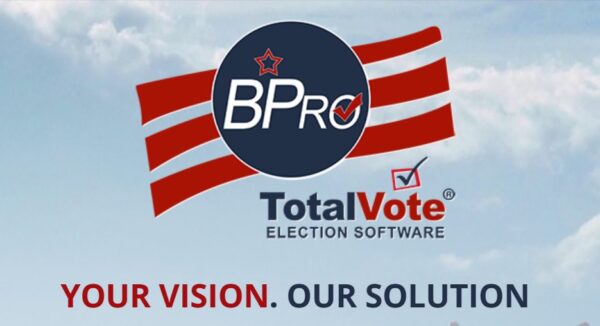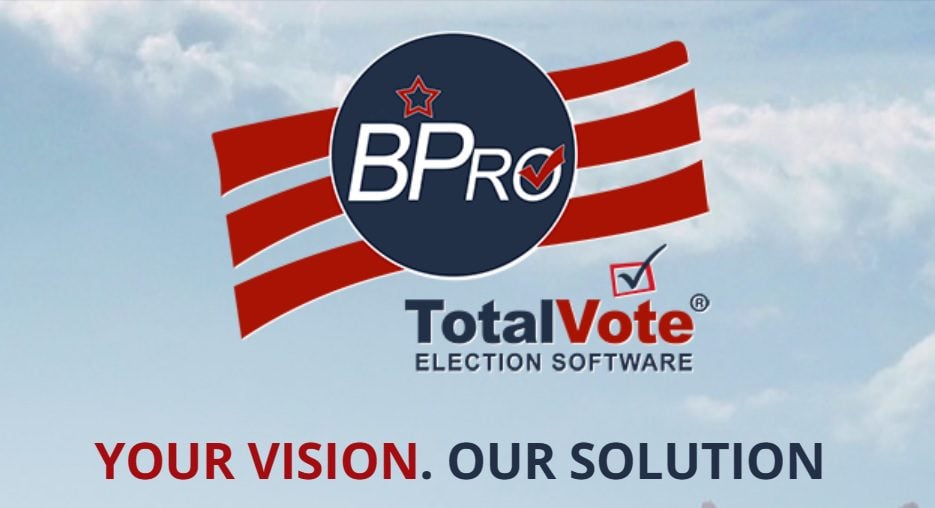
A team of election experts in New Mexico uncovered an election system that is being used in that state and multiple other states that do not comply with election laws.
Election experts in New Mexico established that the post-election canvass reports in all 33 New Mexico Counties are being illegally prepared. Complete election records are being uploaded to an uncertified, centralized software under the control of the Secretary of State (SOS) called SERVIS, which is then used to create the official election results.
Use of any uncertified software for this part of the election process is a violation of federal and state law. And according to state law, the SOS is not to have access to the complete election record from any county until the election has been certified.
According to the experts, when the illegal canvass process is complete the SOS is having counties download election data from internet-connected SERVIS onto their “secure” election computers. At the same time, in New Mexico, Dominion voting systems have deleted the original election data from their system. This is a blatant violation of state and federal law that requires all election records to be kept for 22 months after any election with a federal candidate on the ballot. Also, without paper ballots, the original results for the election are eliminated.
A South Dakota company by the name of BPro “gifted” their TotalVote software to New Mexico, in exchange for a series of what would turn out to be very lucrative, sole-source contracts to develop a customized interface between the SOS, clerks, and TotalVote that they called “IRIS.” IRIS was renamed “SERVIS” (Statewide Elections, Registration and Voting Integrity System) in 2017.
According to the BPro website, TotalVote is a “centralized voter registration and election management system that securely captures and manages voter, candidate, and all election information. It is the only software system that encompasses the entire election process into one system.” (emphasis added).
TotalVote has no Election Assistance Commission (EAC) certifications whatsoever. Meaning it does not comply with the Help America Vote Act and it has never been tested by any accredited third party. However, as previously established, it is certainly touching parts of the election that require certification.
To date, New Mexico has paid BPro a total of $2,722,939 for the development and upkeep of SERVIS necessary to utilize their “gift” of TotalVote.
From reviewing the contracts, it appears that SERVIS took several years to fully develop. Online voter registration was launched in 2016, but the integration with the Motor Vehicle Department wasn’t functional until 2018. It is unclear when SERVIS began handling the entire post-election canvassing process.
Internal training documents indicate that limited election night data is uploaded on Election Day, but all of the election data from the electronic tabulators is uploaded the day after the election. Then SERVIS is used to create the canvass documents against federal law, and the SOS is given full access to the entire state’s data before any county has certified, against state law.
Further, state and federal law requires that only aggregated data—and not data from individual ballots—be used for election night reporting that appears on the SOS’s website. Also, there can be no access path from the election night reporting to any storage device used for official data.
The most disturbing discovery by far was this slide, titled “Protecting the Dominion Server Air Gap,” from internal training documents. It shows the clerks how they are to transfer their data from their Dominion Server to the SERVIS system and back again:

As the figure shows, USB memory sticks in “read-only” mode are being used to move data from the Dominion server, which houses the official digital election results for each county, to the internet-connected “SERVIS” computer. As soon as the results are uploaded into SERVIS the day after the election, the entire statewide results are accessible by multiple parties and could be manipulated and changed.
The instruction for downloading data from the “SERVIS Computer” back to the “Dominion Server” is to use USB memory sticks in “read-write” mode. This instruction is mind-blowing, and literally the opposite of “protecting the air gap.” What data does the SOS need to transfer to the counties since she is not supposed to have any part in finalizing a county’s election?
The obvious vulnerability? If election results needed to be changed by the SOS or anyone with authorized or unauthorized access to SERVIS, they could be. Then those corrupted results could be loaded onto the county’s servers, overwriting the original data and no one would ever know.
IS SERVIS COMPROMISED?
The SERVIS program is internet-connected, uncertified, and accessible by all county clerks, the SOS’s office, the Department of Motor Vehicles, and potentially others such as ERIC, VIP, and “registration agents” according to the BPro contracts.
The public, who has paid for its creation, has no way of knowing whether SERVIS can be trusted since it has never been tested to EAC standards, even though it handles parts of the election that are subject to federal oversight.
WAS BPRO A TROJAN HORSE?
The SOS’s custom software SERVIS is being used outside state and federal law meant to protect our elections from bad actors.
Facts would suggest that the “gift” of BPro’s TotalVote software could be a Trojan horse that is being used to subvert New Mexico’s elections. And this issue affects more than just New Mexico. The BPro platform is used in at least 15 other states, including Arizona and Nevada – two states that “stopped counting” in the middle of the night and took days to report their election results in 2020, with Arizona repeating the exercise in both the primary and general 2022 elections.
Americans must demand that their election data be held entirely within their counties as the law requires.
The post EXCLUSIVE: ELECTION SYSTEM DISCOVERED – Used in MULTIPLE States – Internet Connected, Uncertified, and Accessible to Numerous Govt Agencies and Outside Entities appeared first on The Gateway Pundit.
